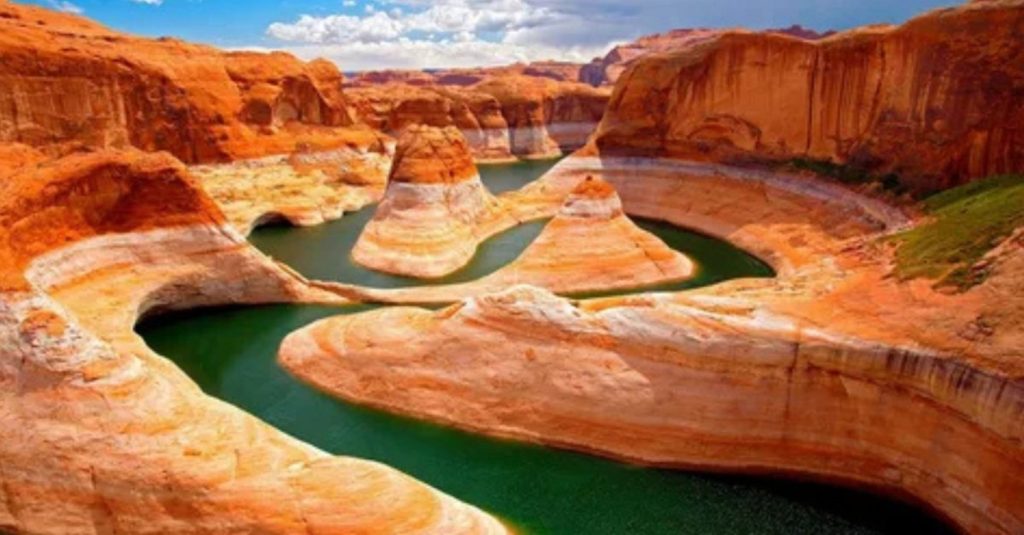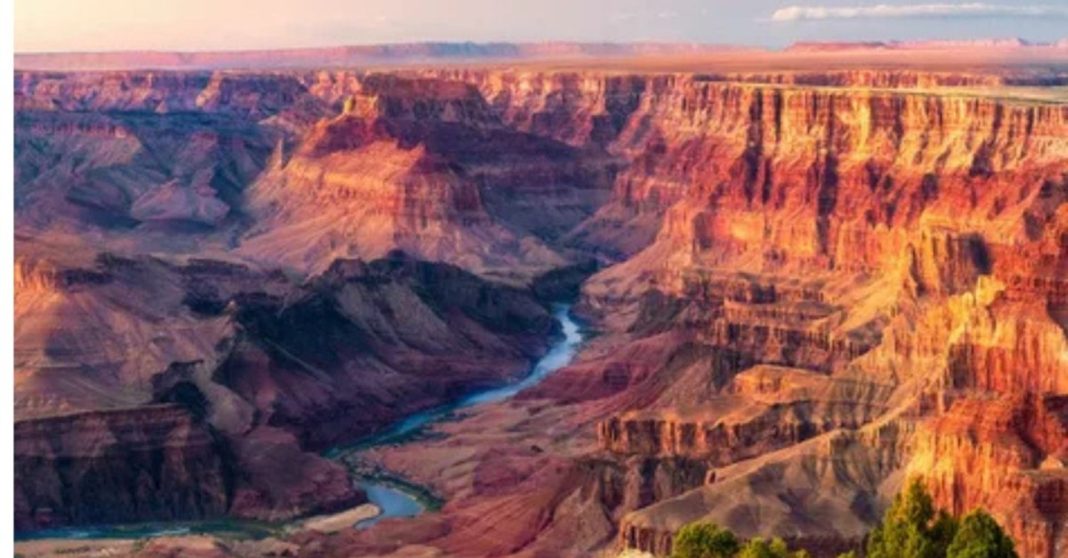How Grand Canyons Are Formed
Grand canyons are one of the most breathtaking natural landforms on Earth. These deep and wide valleys with steep sides are carved through solid rock over millions of years. But have you ever wondered exactly how grand canyons are formed?
What Is a Grand Canyon?
Before we learn how grand canyons are formed, let us understand what a canyon is. A grand canyon is a very large and deep valley with steep walls, often created by a river cutting through rock layers over a very long period of time. The most famous example is the Grand Canyon in the United States, carved by the Colorado River.
How Grand Canyons Are Formed: Main Natural Forces
River Erosion – The Key to How Grand Canyons Are Formed
One of the main reasons how grand canyons are formed is a natural process called erosion. Over millions of years, rivers like the Colorado River cut through the surface of the Earth and remove rock and soil. This process slowly deepens and widens the valley, forming a canyon.
- The flowing water carries small rocks and sand.
- These act like tools, scraping the rock surface.
- This leads to a deeper and wider path over time.

Weathering – Helping the River Do Its Job
Another important part of how grand canyons are formed is weathering. This means breaking down rocks due to temperature changes, wind, rain, and ice.
- In hot places, rocks crack when they heat during the day and cool at night.
- Water can seep into cracks and freeze in cold weather.
- Frozen water expands, making the cracks larger.
This process helps make it easier for the river to erode the rock.
Tectonic Uplift – Lifting the Land
Tectonic uplift is a powerful geological process that also explains how grand canyons are formed. Sometimes, the land is slowly pushed upward by movements under the Earth’s crust.
- The uplift gives the river more height to flow down from.
- This increases the river’s energy and its ability to cut through rocks.
- Higher elevation speeds up erosion and helps in canyon formation.
This uplift happened to the Colorado Plateau, which helped form the Grand Canyon.
Time – A Crucial Factor in How Grand Canyons Are Formed
Canyons are not made overnight. One of the most important facts about how grand canyons are formed is that it takes millions of years.
- Erosion is a very slow process.
- A little rock is removed every year.
- Over thousands or millions of years, a deep canyon is created.
The Grand Canyon, for example, is around 5 to 6 million years old.
Layers of Rock Tell the Story
When we look at the steep walls of a grand canyon, we see many colorful layers. These layers are like pages in a history book.
- Each layer represents a different time in Earth’s history.
- Fossils in the layers tell us what kinds of plants and animals lived long ago.
- Geologists study these layers to understand Earth’s past.
Understanding the rock layers is another important aspect of how grand canyons are formed.
Real-Life Example – The Grand Canyon in the USA
Let us look at the Grand Canyon in Arizona, USA, to understand how grand canyons are formed in real life.
- The Colorado River started cutting through the rock around 5 to 6 million years ago.
- The land rose due to tectonic uplift.
- Over time, the river carved a canyon that is now over 1.6 km deep and 446 km long.
- Scientists continue to study the canyon to learn about Earth’s natural history.
Why Learning How Grand Canyons Are Formed Is Important
Understanding how Grand Canyons are formed is not just about learning the story of a deep valley. It helps us appreciate Earth’s powerful natural forces and teaches us many important lessons.
1. Understanding Earth’s History
Learning how Grand Canyons are formed gives us a window into the ancient past. The layers of rocks found in a canyon tell us about events that happened millions of years ago—such as volcanic eruptions, the rise and fall of sea levels, or changes in climate. These rock layers are like pages of Earth’s history book.
2. Appreciating the Power of Nature
Canyons are mainly carved by rivers over millions of years. By studying how Grand Canyons are formed, we can understand the powerful effects of erosion, weathering, water flow, and natural forces. It shows how something as gentle as flowing water can shape massive landforms with time.
3. Learning About Geology and Geography
This topic introduces us to key ideas in geology (the study of rocks) and geography (the study of landforms). Students can learn about rock types, river systems, erosion, plate tectonics, and more. It makes Earth science more real and exciting.
4. Environmental Awareness
When we understand how Grand Canyons are formed, we also begin to understand how fragile and unique these natural structures are. It teaches us to value and protect natural wonders from pollution, deforestation, and misuse.
5. Inspiring Scientific Curiosity
For many, seeing or studying a Grand Canyon can be the start of a love for science. It inspires questions like:
- How long does it take for a canyon to form?
- What types of rocks are in it?
- Could canyons form on other planets?
This kind of curiosity is the root of all scientific learning.
6. Encouraging Patience and Long-Term Thinking
Canyons take millions of years to form. By learning about them, we realize that change doesn’t always happen fast. It encourages patience, respect for time, and a deeper understanding of Earth’s slow but constant processes.
7. Tourism and Economy
Grand Canyons like the famous one in the USA attract millions of tourists each year. Understanding how they are formed helps local communities protect these landmarks while also using them responsibly for educational tourism.
Conclusion: The Long Journey of a Canyon
Now you know how grand canyons are formed. It is a slow, powerful process involving erosion, weathering, tectonic uplift, and time. These natural forces work together over millions of years to create the magnificent canyons we see today. The story of how Grand Canyons are formed is a tale written slowly over millions of years by nature itself. Through the steady power of erosion, the carving action of rivers like the Colorado, the uplift of the Earth’s crust, and the changing climate, these magnificent canyons were gradually shaped into the deep, winding landscapes we admire today.
learn about Earth’s history, climate, geology, and the power of natural change.
FAQ on How Grand Canyons Are Formed
Q1: What is the main cause of canyon formation?
A: River erosion is the main cause of canyon formation.
Q2: How long does it take to form a grand canyon?
A: It usually takes millions of years for a grand canyon to form.
Q3: What river formed the Grand Canyon in the USA?
A: The Colorado River carved the Grand Canyon in Arizona, USA.
Q4: What is erosion?
A: Erosion is the process by which water, wind, or ice wears away rocks and soil.
Q5: Can canyons form without rivers?
A: Rarely. Most canyons are formed by river erosion, though glaciers and tectonic activity can also create canyons.




